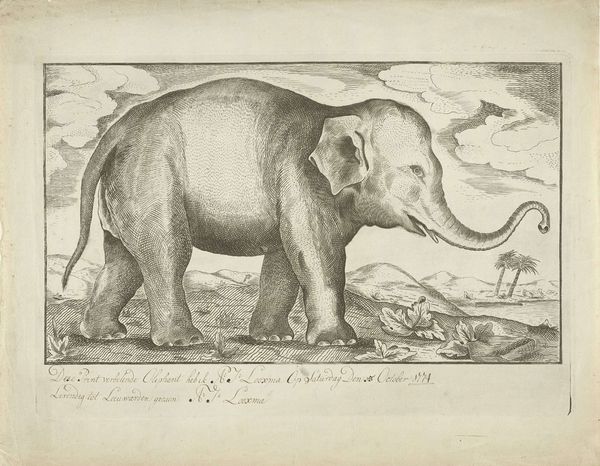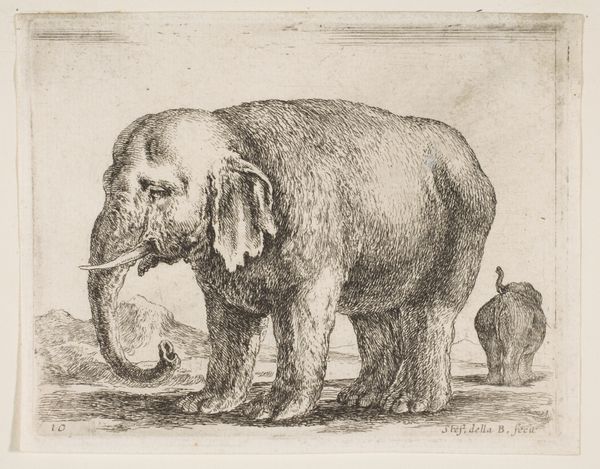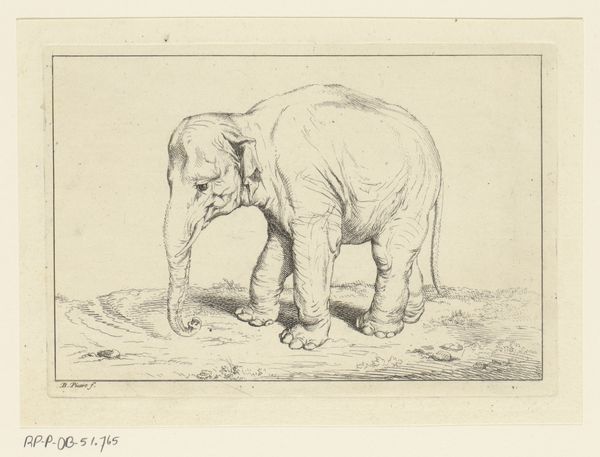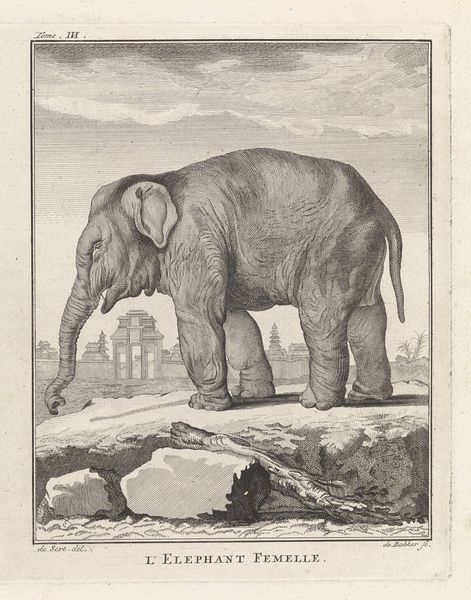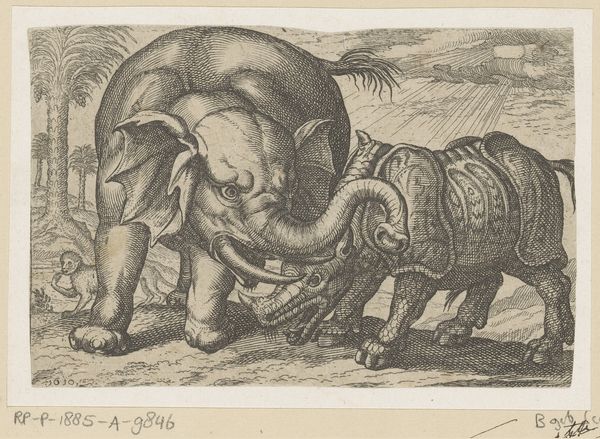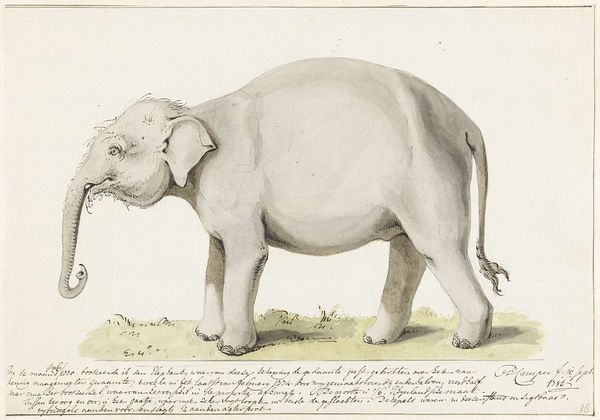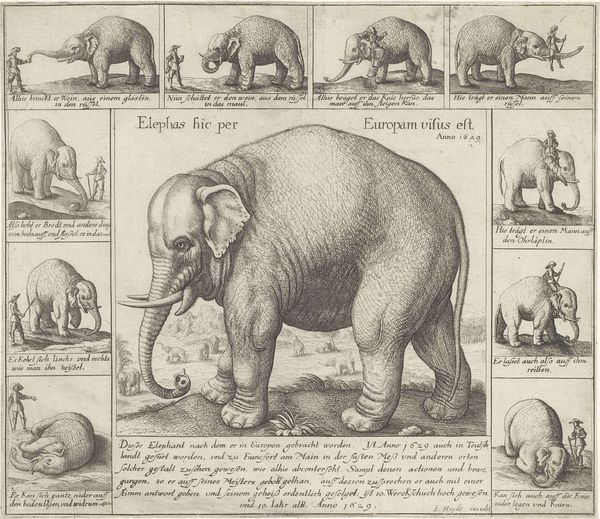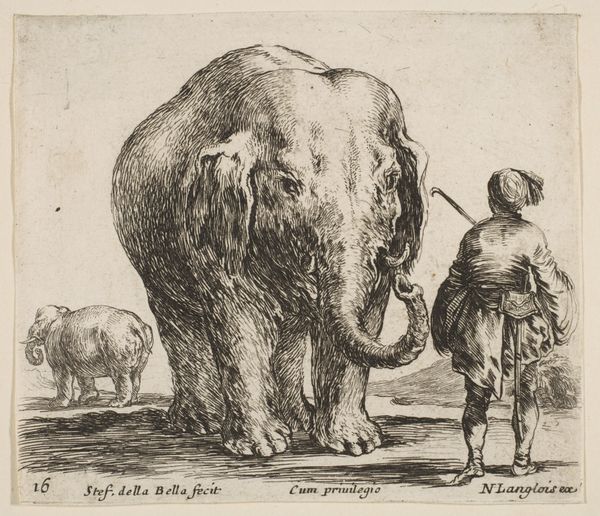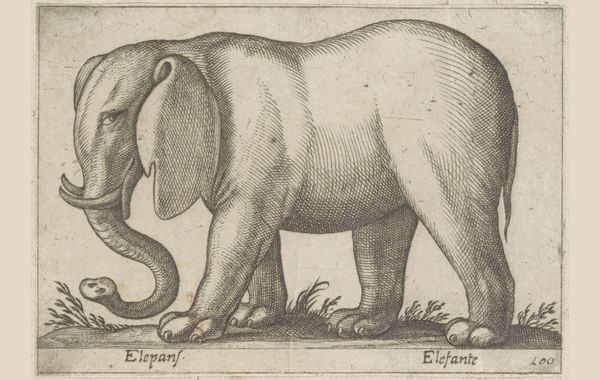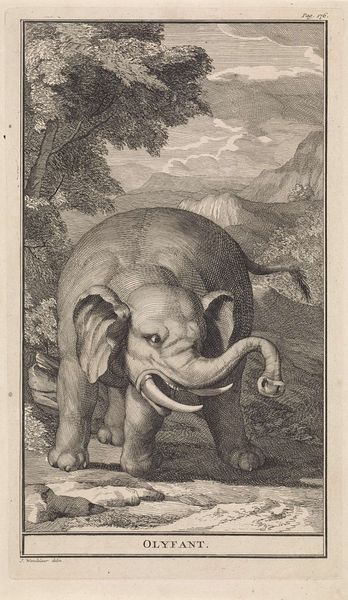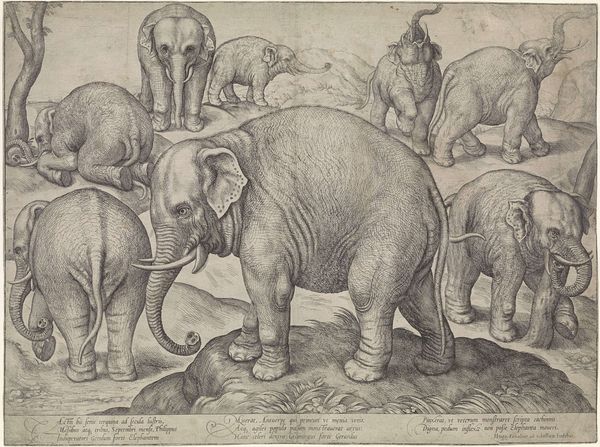
print, engraving
#
baroque
#
animal
# print
#
engraving
#
realism
Dimensions: 127 mm (height) x 167 mm (width) (plademaal)
Curator: Immediately I'm struck by this sweet, melancholy air about this rather plump pachyderm! It’s an engraving, a print dating from the 1740s called “En elefant.” Look how it looms on the grass; a really singular focus by Johanna Fosie now residing here at the SMK. What leaps out to you? Editor: The focus is entirely on this specimen, which speaks volumes about eighteenth-century scientific observation and its impact on visual representation. Note the meticulous rendering; it is as much an act of cataloging and possessing as it is art. The work is purely objective. Curator: Possessing, yes, it’s framed rather like a curio isn't it, not just as scientific data, but an object to be studied and enjoyed, back in Europe, as elephants would have still been pretty wondrous! Almost exotic, but presented clinically… What's the relationship to power, you think, in all this detail? Editor: The very act of engraving – the labour, the reproduction for a consuming audience – places the natural world within the grasp of the expanding mercantile class. Fosie’s process, etching away at the metal, mirroring the contemporary European reach. Each print, another symbol of domination, you see? Curator: True! Each line has its social and economic charge in that way! And the “realism,” then – is that not part of that charge? To render the creature believable for consumption. Editor: Precisely! The demand for such "realism" arose from a social structure eager to control and systematize its understanding of the world. The elephant as commodity, the engraving process part and parcel of the system that craved such order. Curator: What I love about this particular print is that, despite it all, there's also this real sense of character in the animal, a little like it might stroll off the page. It makes you feel the reality of the subject, regardless of the context! Editor: I agree to some extent – that direct contact! By dissecting the image and acknowledging its means of production, perhaps we are armed to experience it more authentically and to learn more, besides.
Comments
No comments
Be the first to comment and join the conversation on the ultimate creative platform.

